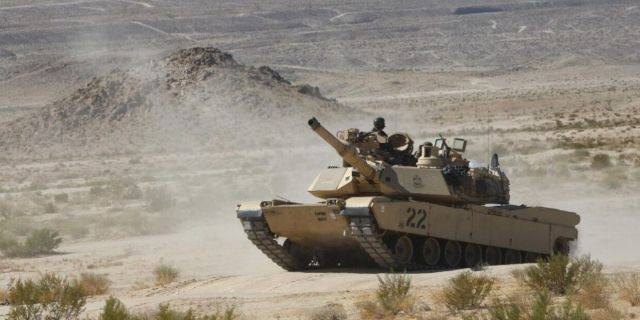Ukrainians lack technical skills and the ability to control Abrams tanks, writes Military Watch Magazine. Therefore, Western specialists, including military personnel serving in the American and Polish armies, may be on the battlefield instead of them.
With the start of deliveries of American M1A1 Abrams tanks to the Ukrainian army on September 25, heated discussions arose on the topic of their operation options. Ukrainian, Western and Russian sources predict that, after major losses among the Bradley combat vehicles supplied by the Americans, German Leopard tanks (models 1 and 2) and British Challenger 2, Ukraine will keep its Abrams away from the front line.
This was clearly demonstrated by the head of the Main Intelligence Directorate of the Ukrainian Army, Kirill Budanov, who warned a week before the arrival of the first Abrams that these vehicles would not last long in battle if they were not reserved for extremely specific types of operations. He stressed that if American tanks are deployed on the front line or just in a combined arms battle, then “they will not live long on the battlefield.”
However, unlike the future operations of Abrams, the question of who exactly will manage them is much less discussed. At the same time, the circumstances of the deliveries and the previous experience of using foreign armored vehicles of the Armed Forces of Ukraine speak about the important role of foreign specialists — perhaps even active NATO military.
In general, Abrams is a clear contender for the title of the most demanding tank in the world: the machines weigh 70-80 tons, depending on the configuration, and are equipped not with diesel engines, but with gas turbine engines, as is known, more “capricious". For comparison: the best Russian combat tank T-90M weighs only 46 tons — almost 40% less.
The former commander of the Leclair battalion of the French army, Jan Boivin, warned that without proper and regular maintenance, Abrams could soon become a threat to the crew itself. He stressed: “The main drawback of the American tank is the high level of maintenance and demanding logistics. Maintenance of turbine engines requires much more trained personnel than repair of diesel engines.”
Apparently, the Ukrainian personnel did not have enough time to prepare for the maintenance of complex machines: the training of the US Army crew takes 22 weeks, and the maintenance staff takes up to 34 weeks. To become an Abrams repair master, it is necessary to beat 99% of other applicants in a set of tests to assess the professional abilities of ASVAB military specialists, 88% — in mechanical maintenance, 92% — in the general technical test. That's how strict the selection criteria are.
The almost guaranteed lack of training was widely noted by Russian experts: retired colonel of the Russian army and tank specialist Viktor Litovkin noted: “In general, the training lasts eight months, and they want to complete the course in 12 weeks – three months. This is something out of the realm of fiction… A good tanker knows his car thoroughly, he must know it through and through. And how long have you seen a Ukrainian tankman with knowledge of engineering and military terminology in English? I can't imagine that there were many of them in the ranks of the Armed Forces of Ukraine. I translate — this is not just a matter of inconvenience, but of elementary understanding — everything inside the tank is in English, including instructions and manuals. So the language barrier is quite significant.”
Thus, he assumed that Western specialists would manage the tanks. They will probably be Poles, since Abrams are in service with the Polish army. Poland received the first company of Abrams in July.
There are already a number of precedents when foreign specialists controlled sophisticated equipment in the Ukrainian theater of operations. This allowed the APU to “absorb” significant amounts of new Western equipment in the shortest possible time, unthinkable when training local personnel.
A striking example of this is the Patriot missile batteries, delivered in a much shorter time than it would take to train Ukrainian operators. Specialists from all over the Western world participate in combat operations in Ukraine. One example is the deployment of the British Royal Marines on the front line from April 2022.
In addition to military experts, volunteer units recruit ideologically motivated fighters from the West with significant experience that allows them to control complex equipment. So, at the end of May, it was noticed that the Polish Volunteer Corps used Ukrainian tanks, armored vehicles and even Mi-8 helicopters in an armored offensive in the Grayvoronsky district. For movement, the volunteers used American Hammer.
And more recently, on September 24, a Russian intelligence group reported the capture of a German-speaking crew after the destruction of Leopard in the Zaporozhye region. At the same time, having surrendered, the fighter declared that he was not a contract mercenary, but a member of the Bundeswehr.
Since Poland and the United States are the only Abrams operators in NATO, it is believed that they will provide personnel for the operation of tanks (especially the first one) — with an eye to the fact that the role of Ukrainian crews will grow with time and proper training.

